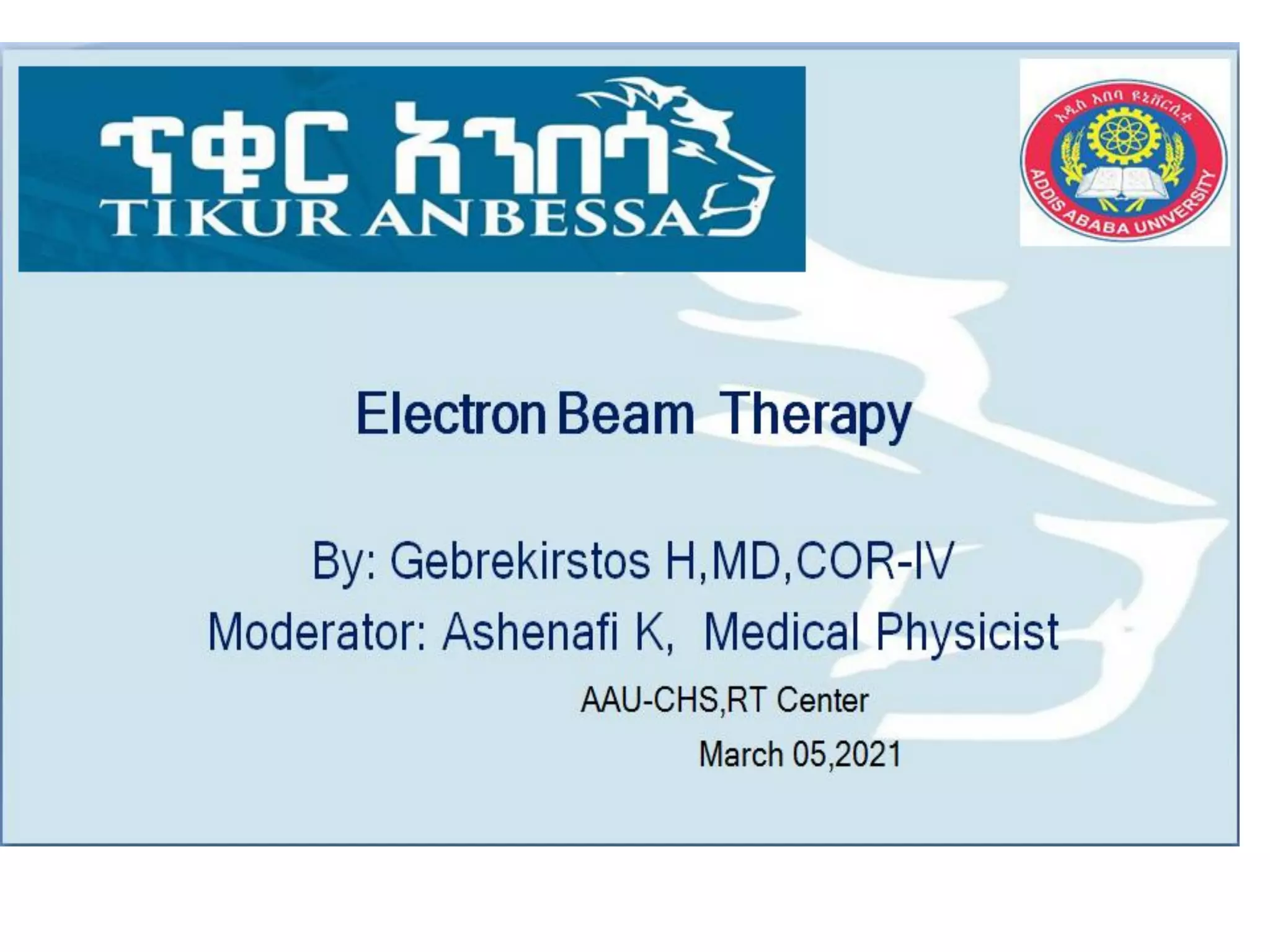The document discusses the principles and clinical applications of electron beam therapy, highlighting its unique dosimetric characteristics compared to photon therapy, such as higher surface doses and a more defined energy range. It covers the depth dose distribution, key dosimetric parameters, and the importance of selecting appropriate beam energy for effective treatment. Additionally, the document addresses the use of bolus materials, field shaping techniques, and challenges related to dose inhomogeneity and treatment planning.




































































